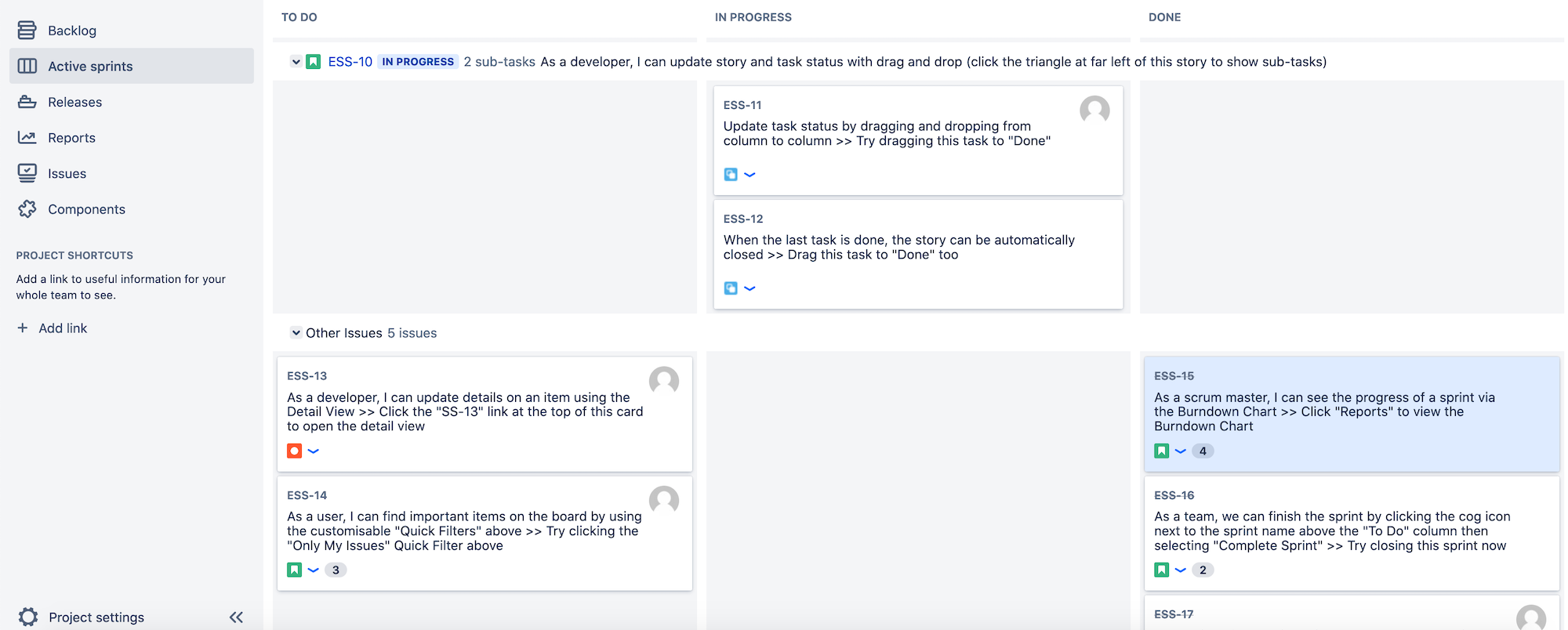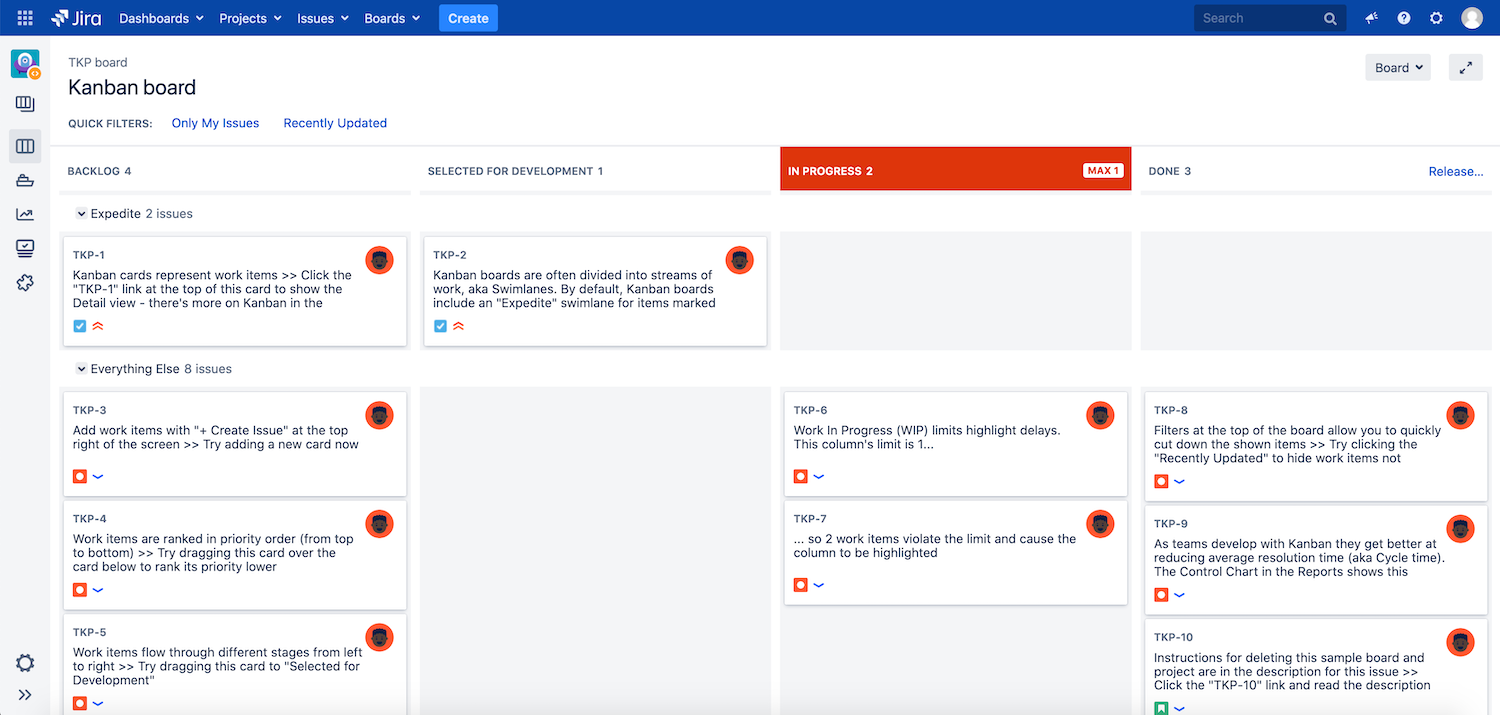It would be nice if developing software were like making a cake: you’d prepare the batter according to a neatly defined recipe, put the cake in the oven, take it out, eat it and be done.
But software is not cake. Software applications are constantly evolving creations that, in many cases, are never truly complete. Nor is there typically a simple recipe for you to follow when writing code. Instead, it’s up to you to figure out how best to develop whatever it is you are supposed to develop. Even the features that your application needs to include may change along the way, together with shifts in business goals and priorities.
Agile software development is the answer to these challenges. Agile methodologies can help streamline collaboration between developers, maximize software quality, and more.
What is Agile Software Development?
Agile software development is based around self-organization and collaboration. It’s best to think of agile as a broad group of concepts that serve as general guidelines for the way programmers should think about software development, rather than as a rigid, specific set of ideas that dictate exactly how to write code. By focusing on adaptivity, business and user needs, and workers themselves, the agile mindset enables developers to deliver functional end products quickly and incrementally.
Agile software development debuted as an explicit concept in 2001, when seventeen software developers convened in Utah to produce a document called the Agile Manifesto. The programmers drew on principles associated with so-called “lightweight” software development, which had been in practice throughout the 1990s. The manifesto codified agile principles for the first time and gave birth to agile software development as a distinct movement. Many of the ideas associated with agile software development have since been applied to other iterative processes, like project management, business development, and even accounting.
Agile prioritizes working code over flawless code. It encourages developers to focus on meeting the needs of the end user, rather than wasting time trying to perfect every aspect of an application.
Why use Agile?
Agile is so influential because it offers a range of benefits — not just to developers, but to all stakeholders, from customers to management:
- Speed: Agile encourages developers to move quickly and avoid getting bogged down by unnecessary delays, like trying to perfect every line of code before releasing an application. Function over form is the name of the game.
- Quality: Even though agile discourages perfectionism, it upholds strong quality standards by focusing on meeting user needs. It also supports the concept of incremental development, which leads to better software quality over time.
- Collaboration: Agile prioritizes clear communication and transparency between development teams, as well as the stakeholders they support.
- Clear goals: By identifying the production of working software as the central goal of any software project, agile helps developers pursue a clear set of goals, even if the business environment they are working in changes.
- Sustainable software: Agile encourages developers to devise application architectures and software development practices that are sustainable over the long term. This helps ensure that the investment a business makes in an agile project will deliver continuous value.
- Developer support: When developers have the tools and other resources they need, they’re best positioned to deliver software that satisfies user requirements.
Agile Frameworks
As noted above, there is no single specific way to “do” agile. Agile is a set of high-level ideas, and it’s up to an organization to decide how it wants to go about translating those ideas into practice.
To help in this process, a number of agile frameworks have emerged. Agile frameworks prescribe certain practices or methodologies that teams can follow to implement the principles associated with agile software development.
The two most popular agile frameworks today are Scrum and Kanban.
Scrum
Scrum was first described in the mid-1980s, before the agile movement started, but later came to be closely associated with agile software development. At its core is the concept of “sprints” — time-limited periods dedicated to completing a set chunk of work. By breaking up large, complex projects into smaller components, sprints make daunting tasks achievable.

Scrum also involves key roles that help an organization build agile processes: the product owner, development team, and Scrum Master. The product owner defines development goals, while the development team works towards them. The Scrum Master serves as a liaison between the product owner and the development team and is responsible for educating both groups about agile processes and helping them achieve agile goals. A Scrum-based process will only be as good as the Scrum Master who leads it, and an ineffective Scrum Master means the project will struggle to put agile principles into practice.
Kanban
While Scrum places greatest priority on defining certain roles within an agile project, Kanban focuses on communication and transparency. The driving idea behind Kanban is that as long as your stakeholders communicate efficiently and clearly, they will succeed in adhering to agile processes.
At the core of the communication process defined by Kanban is a Kanban board, which is a physical or digital board that displays information about every unit of work within the project. Using a Kanban board, teams can track each other’s activities and visualize where an entire project stands at a glance. Just as a bad Scrum Master can undercut the effectiveness of Scrum, a poorly designed Kanban board, or one that is not updated consistently, becomes a single point of failure for a Kanban process.


What About Waterfall and DevOps?
Waterfall and DevOps aren’t agile frameworks. Instead, they’re distinct approaches to software development.
Waterfall divides activities into distinct phases and usually does not allow a phase to start until the one preceding it is complete. Small problems can quickly snowball into larger ones that delay the project as a whole due to this linear design and the inability to move onto the next task until you finish the current one. In addition, waterfall’s focus on the needs of developers rather than end-users means that keeping developers busy can take precedence over understanding end-users’ needs and aligning developers’ work to meet them.
Agile may also be compared to DevOps, a software development philosophy that became popular over the course of the 2010s. DevOps shares some core principles with agile, such as the concept of continuous delivery of software to users. In fact, some programmers have argued that DevOps is essentially an evolution of agile. But, like the definition of agile itself, that’s a subjective question. A majority of developers draw a distinction between agile and DevOps, despite the commonalities between them.
Getting Started with Agile Software Development
How can you start adopting agile principles? Here are some basic principles for getting agile software development off the ground at your organization.
Define and collect KPIs
Identify and track key performance indicators (KPIs) about your project, such as how much code you produce per month, how frequently you issue new application versions to your users, and how many bug reports are filed in a given period of time. These metrics will help you quantify and assess your project’s performance.
Continuously improve
The concept of continuous improvement is part and parcel of agile. No matter how successful your project is, you should always be looking for inefficiencies or problems that you can address in order to make the process even better.
Align with business needs
Part of the agile philosophy includes ensuring that projects serve the needs of end users and other stakeholders. Toward that end, you should constantly be assessing how well your processes and products support the overall needs of the business, and take steps to realign if you find shortcomings.
Embrace change
Agile is also founded on the idea that constant change is not only unavoidable, but good. Rather than resisting change by, for example, trying to avoid rearchitecting your applications or restructuring your team, embrace change as an opportunity to improve and optimize.
Define Your Roles
You should designate roles that define how different stakeholders fit within the agile process. These may mirror those used in Scrum — with a “team lead” substituting for the Scrum Master — but it can be helpful to define other positions within your project as well. For example, you could treat customers or end-users as a distinct role and involve them in your agile process by collecting their feedback about how well your product meets their needs. You may also want to designate a finance lead, who is responsible for helping to keep the project within your budget. Likewise, for projects that need to meet specific regulatory requirements, a compliance or legal lead may be a useful role to include.
Scale as Needed
Part of the reason agile has become so popular is that it can be used or virtually any type of project, on any scale. It works for small teams, but it can also support large enterprise projects that involve hundreds or even thousands of participants through SAFe — or the Scaled Agile Framework.
SAFe is a reference framework that provides guidelines for scaling agile practices to fit the needs of large organizations. It emphasizes principles such as delegating responsibility in order to keep agile processes flowing across large teams, avoiding rigidly defined processes that prevent multiple teams from working effectively in parallel, and collaboratively planning for medium-term and long-term project growth. If you’re looking to implement agile on the enterprise-level, SAFe — and the tools needed to make it work — is a great place to start.

Tools for Agile Software Development
Having agile-friendly tools on your side goes a long way toward making it practical to implement agile methodologies, and Jira Software is one of the best. It provides a flexible yet consistent way to design project roadmaps, track progress, define roles, associate them with processes, and much more. Jira also offers add-ons for organizing projects according to the tenets of specific agile frameworks, including Kanban, Scrum, and SAFe. With Jira, agile teams can plan, structure and manage projects in whichever way works best for them, while also collecting the insights that support continuous improvement.
Make Agile Work for You
Agile offers a variety of benefits, but it can also be difficult to implement — especially if you have existing processes in place that you need to adapt to fit agile methodologies. And learning how to use tools like Jira in ways that best align with your business needs requires significant effort.
The experts at Contegix can help address these challenges. Drawing on their deep experience with Jira and other Atlassian tools, Contegix consultants can help your team navigate the complex agile landscape and implement the right tools to make agile work for you.
Contact us to learn more about how Contegix can empower your organization to implement agile practices.
